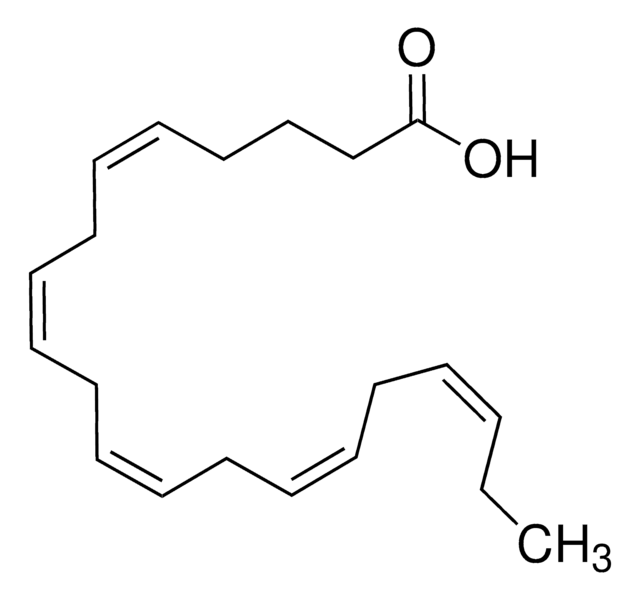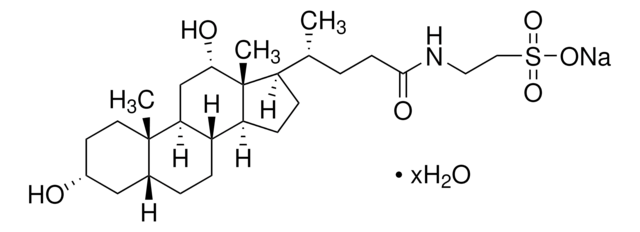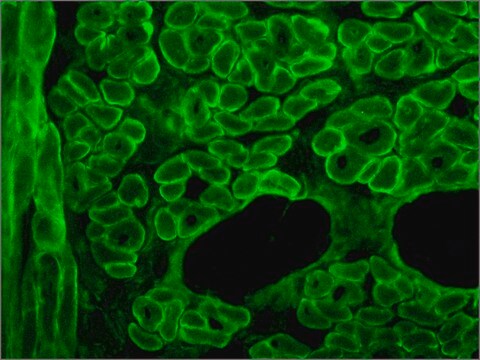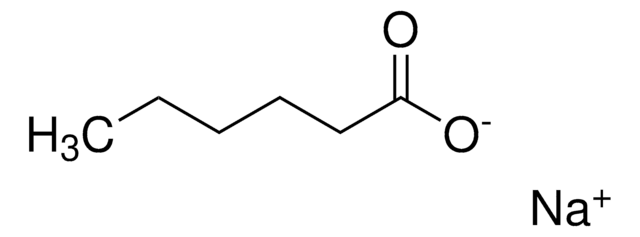Kluczowe dokumenty
D8768
cis-4,7,10,13,16,19-Docosahexaenoic acid sodium salt
≥95%, waxy solid
Synonim(y):
Sodium (all-Z)-4,7,10,13,16,19-docosahexaenoate
About This Item
Polecane produkty
pochodzenie biologiczne
cod liver oil
Poziom jakości
Próba
≥95%
Formularz
waxy solid
grupa funkcyjna
carboxylic acid
typ lipidu
omega FAs
Warunki transportu
ambient
temp. przechowywania
−20°C
ciąg SMILES
CC/C=C\C/C=C\C/C=C\C/C=C\C/C=C\C/C=C\CCC(O[Na])=O
InChI
1S/C22H32O2.Na/c1-2-3-4-5-6-7-8-9-10-11-12-13-14-15-16-17-18-19-20-21-22(23)24;/h3-4,6-7,9-10,12-13,15-16,18-19H,2,5,8,11,14,17,20-21H2,1H3,(H,23,24);/q;+1/p-1/b4-3-,7-6-,10-9-,13-12-,16-15-,19-18-;
Klucz InChI
SNNDEWVSGZRIFE-FPYKSTABSA-M
Kod klasy składowania
11 - Combustible Solids
Klasa zagrożenia wodnego (WGK)
WGK 3
Temperatura zapłonu (°F)
Not applicable
Temperatura zapłonu (°C)
Not applicable
Środki ochrony indywidualnej
Eyeshields, Gloves, type N95 (US)
Wybierz jedną z najnowszych wersji:
Masz już ten produkt?
Dokumenty związane z niedawno zakupionymi produktami zostały zamieszczone w Bibliotece dokumentów.
Klienci oglądali również te produkty
Produkty
The potential for the prevention and treatment of cardiovascular disease through increased dietary intake of omega-3 (w-3) fish oils is not a recent scientific discovery.
Nasz zespół naukowców ma doświadczenie we wszystkich obszarach badań, w tym w naukach przyrodniczych, materiałoznawstwie, syntezie chemicznej, chromatografii, analityce i wielu innych dziedzinach.
Skontaktuj się z zespołem ds. pomocy technicznej












